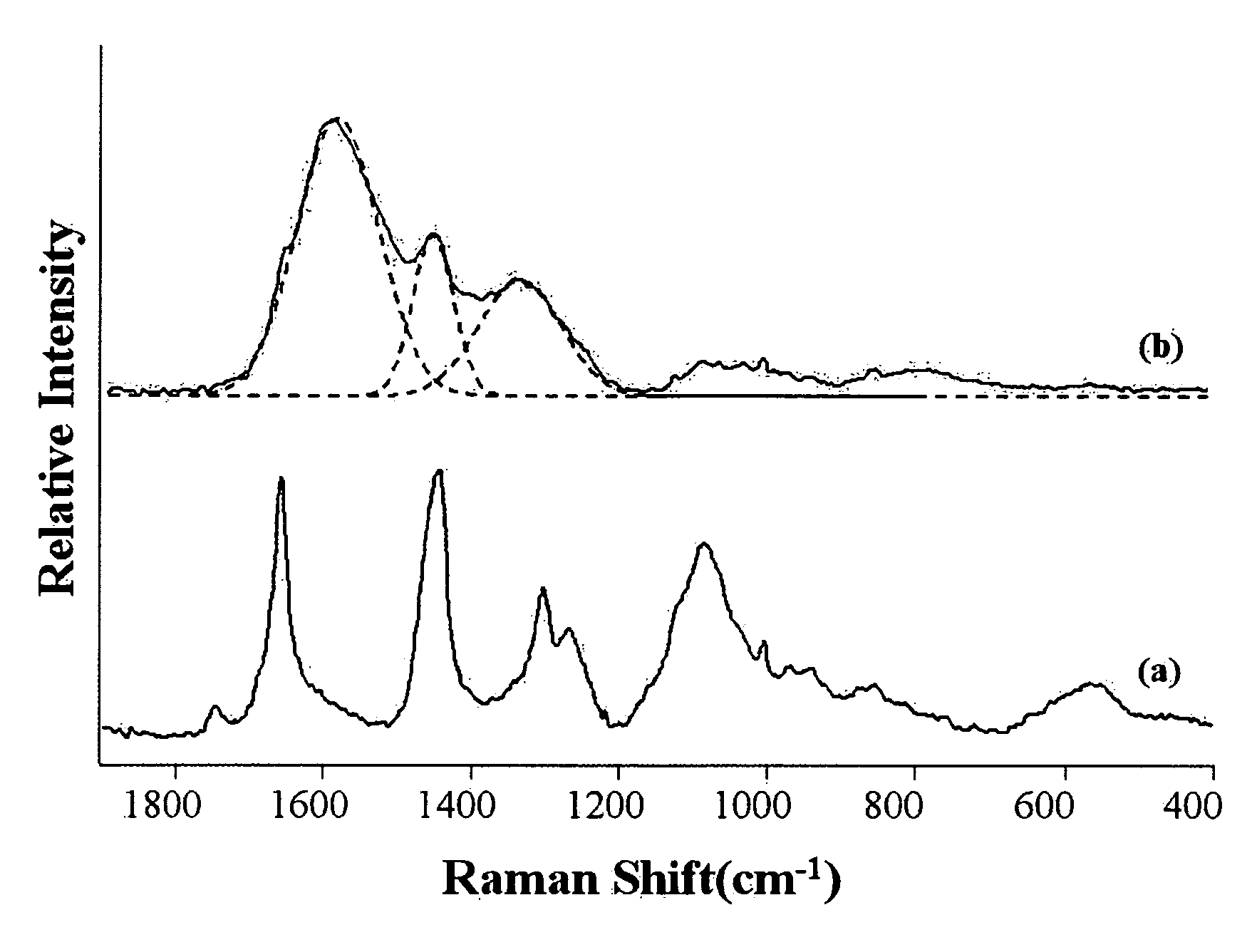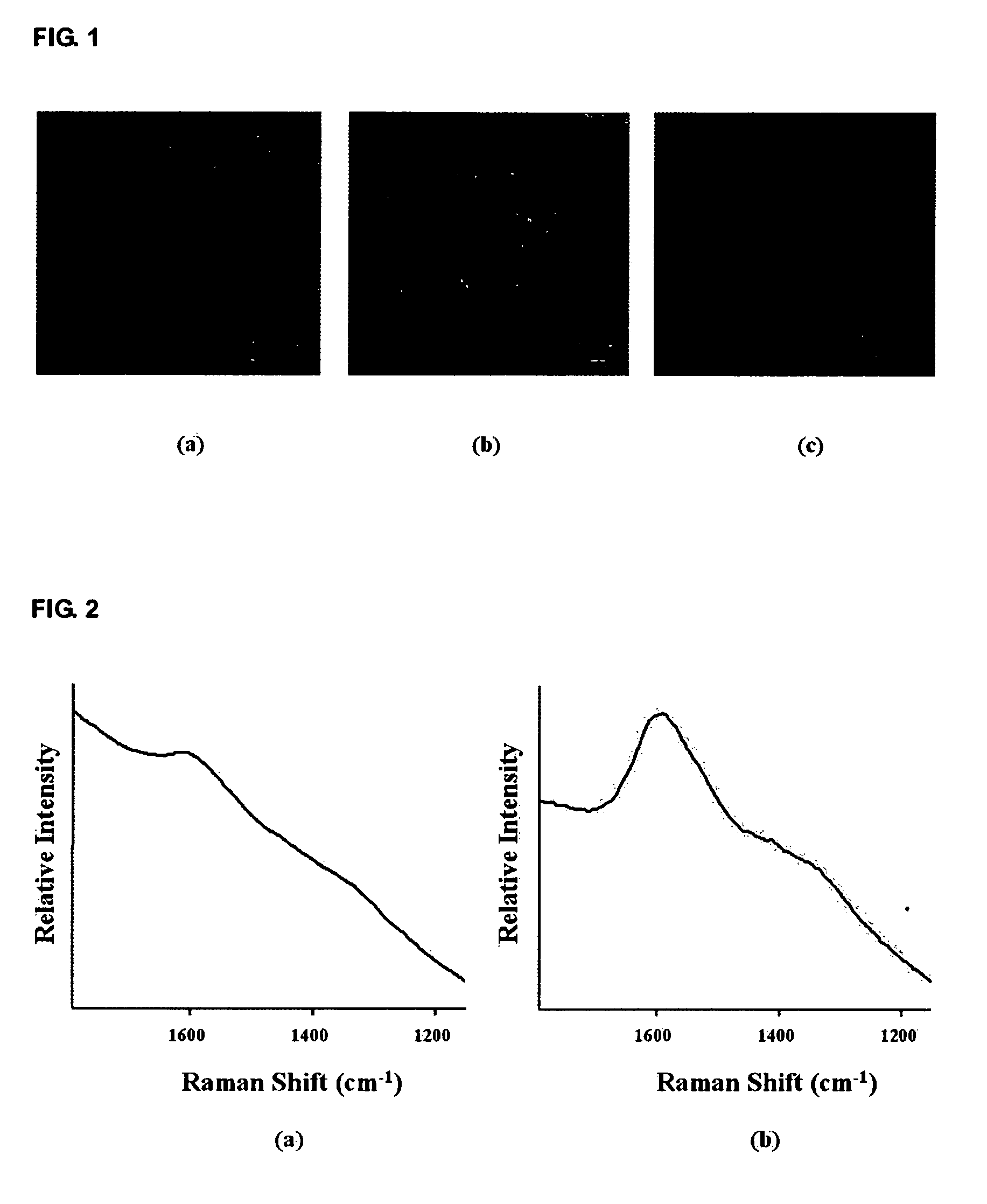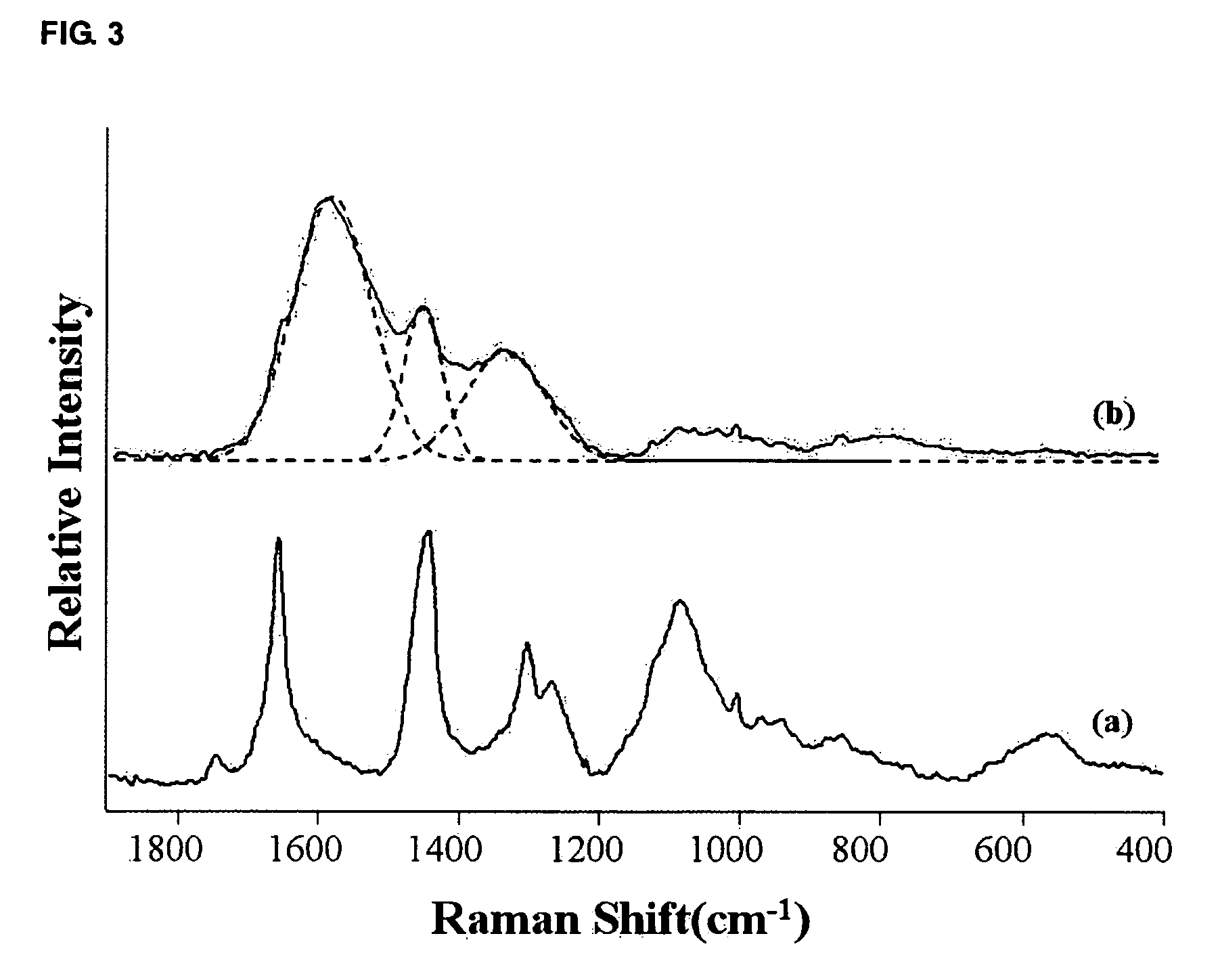Method for reducing auto-fluorescence signals in confocal Raman microscopy
a raman microscopy and autofluorescence technology, applied in the field of reducing autofluorescence signals in confocal raman microscopy, can solve the problems of excessive tissue biopsy, difficult early detection, and dramatic increase in the incidence of skin cancer, and achieve the effect of strong potential for non-invasive diagnosis of skin cancer and strong potential for us
- Summary
- Abstract
- Description
- Claims
- Application Information
AI Technical Summary
Benefits of technology
Problems solved by technology
Method used
Image
Examples
example 1
Skin Tissue Preparations
[0033] Skin tissue samples were obtained from the Dermatologic Department of Korea University Hospital in Korea. BCC tissues used for confocal Raman measurements were obtained from 10 patients using a routine biopsy. Cross-sections 20 μm thick were cut with a microtome at −20° C., and frozen sections were stored in liquid nitrogen before use. Two thin sections were cut for the experiments. One section was used for confocal Raman profiling experiments and the other section was stained with H&E and sent to an expert pathologist for a routine cancer diagnosis. The H&E section was also used as a Raman reference to locate the boundaries between the different skin-layers in the unstained section. In the present paper, characteristic Raman spectra for three different area of BCC tissues will be introduced.
example 2
Confocal Raman Measurements
[0034] Confocal Raman measurements were performed using a Renishaw 2000 Raman microscope system. A Spectra Physics argon ion laser operating at λ=514.5 nm was used as the excitation source with a laser power of approximately 20 mW. The Rayleigh line was removed from the collected Raman scattering by a holographic notch filter located in the collection path. Raman scattering was detected using a charge-coupled device (CCD) camera at a spectral resolution of 4 cm−1. An additional CCD camera was fitted to an optical microscope to obtain optical images of skin tissue samples. A two-slit confocal arrangement was used to reduce background Raman scattering from the unfocused laser beams. All Raman spectra were measured in the confocal mode to remove out-of-focus signals (Lee et al., J Raman Spectrosc 2003, 34, 737-742). In the Raman system, the function of the pinhole was replaced by the cooperation of the entrance slit and the pixels in the CCD detector. The fi...
PUM
 Login to View More
Login to View More Abstract
Description
Claims
Application Information
 Login to View More
Login to View More - R&D
- Intellectual Property
- Life Sciences
- Materials
- Tech Scout
- Unparalleled Data Quality
- Higher Quality Content
- 60% Fewer Hallucinations
Browse by: Latest US Patents, China's latest patents, Technical Efficacy Thesaurus, Application Domain, Technology Topic, Popular Technical Reports.
© 2025 PatSnap. All rights reserved.Legal|Privacy policy|Modern Slavery Act Transparency Statement|Sitemap|About US| Contact US: help@patsnap.com



